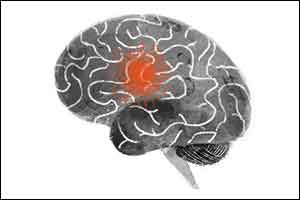- Home
- Editorial
- News
- Practice Guidelines
- Anesthesiology Guidelines
- Cancer Guidelines
- Cardiac Sciences Guidelines
- Critical Care Guidelines
- Dentistry Guidelines
- Dermatology Guidelines
- Diabetes and Endo Guidelines
- Diagnostics Guidelines
- ENT Guidelines
- Featured Practice Guidelines
- Gastroenterology Guidelines
- Geriatrics Guidelines
- Medicine Guidelines
- Nephrology Guidelines
- Neurosciences Guidelines
- Obs and Gynae Guidelines
- Ophthalmology Guidelines
- Orthopaedics Guidelines
- Paediatrics Guidelines
- Psychiatry Guidelines
- Pulmonology Guidelines
- Radiology Guidelines
- Surgery Guidelines
- Urology Guidelines
Endovascular Therapy-Safe and Effective for Distal Occlusion Strokes also

Endovascular therapy can be used for the safe and successful treatment of distal intracranial occlusions and is not limited to the treatment of proximal large vessel occlusion strokes, according to a new study published in the journal Stroke. The findings of the study were presented at the International Stroke Conference in 2017.
The study was conducted by Raul Nogueira, of Emory University School of Medicine in Atlanta and colleagues to determine the safety and efficacy of endovascular therapy in the treatment of distal intracranial occlusions.
With the use of stent retriever, intra-arterial lytics, thromboaspiration, or a combination thereof at the discretion of the treating neurointerventionalist, operators achieved complete or near complete reperfusion (modified Treatment In Cerebral Ischemia [mTICI] grades 2b-3) in 83% of 69 consecutive patients with distal occlusions.
Parenchymal hematomas in the territory of the treated distal occlusion were observed in 4% of patients. At 90 days, 30% had a modified Rankin Scale score of 0-2, while 20% had died, reported Nogueira.
No vessel perforations or secondary proximal occlusions arose during these procedures.
"Distal intracranial occlusions can be treated safely and successfully with endovascular therapy. These results need to be corroborated by larger prospective controlled studies," they concluded.
mTICI 2b-3 reperfusion was achieved in 74% of cases for which operators opted for thromboaspiration and 92% when a stent retriever was used.
Of the 45 cases where a distal occlusion was the primary target of endovascular therapy, it was most often in the middle cerebral artery (MCA)-M3 (n=21), with the remainder in the anterior cerebral artery (ACA) alone (n=8), ACA with a concomitant MCA-M1 or MCA-M2 (n=10), ACA with a concomitant MCA-M3 (n=3), and posterior cerebral artery (n=3).
"As compared with their proximal counterparts, distal arteries are smaller in caliber, have thinner walls, and are typically more tortuous. All these factors increase the treatment risk profile," Nogueira's group commented. "At the same time, distal arteries supply a smaller tissue territory which lessens the benefit of reperfusion."
The study population averaged 66.7 years of age and 57% were men. The group went into endovascular therapy with a median NIH Stroke Scale score of 18, indicating high clinical severity.
Given that the analysis was based on a retrospective review of patients at a tertiary care academic institution, the investigators acknowledged that a control group of patients getting medical therapy was missing in their study.
However, a trial of interventional versus medical management of distal vessel occlusions might be difficult, according to an accompanying editorial by Mayank Goyal, MD, of Foothills Medical Centre in Calgary, Alberta, and colleagues.
"In patients with disabling symptoms and proximal M2 occlusions, we suspect there is consensus on the benefit of endovascular therapy," the group wrote, suggesting that this may hinder randomization.
"Another issue is a likely smaller effect size in distal occlusions than in recent endovascular therapy trials, which in turn considerably increases the needed sample sizes. From a practical perspective, we would be confronted with markedly slower enrolment and with cherry-picking. All the permutations that arise in clinical presentation, anatomic variability and imaging make it also tough to control for in a randomized trial," Goyal's group said.
Based on the study, the authors concluded that distal intracranial occlusions can be treated safely and successfully with endovascular therapy. These results need to be corroborated by larger prospective controlled studies.
For more information click on the link: https://doi.org/10.1161/STROKEAHA.118.020567

Disclaimer: This site is primarily intended for healthcare professionals. Any content/information on this website does not replace the advice of medical and/or health professionals and should not be construed as medical/diagnostic advice/endorsement or prescription. Use of this site is subject to our terms of use, privacy policy, advertisement policy. © 2020 Minerva Medical Treatment Pvt Ltd